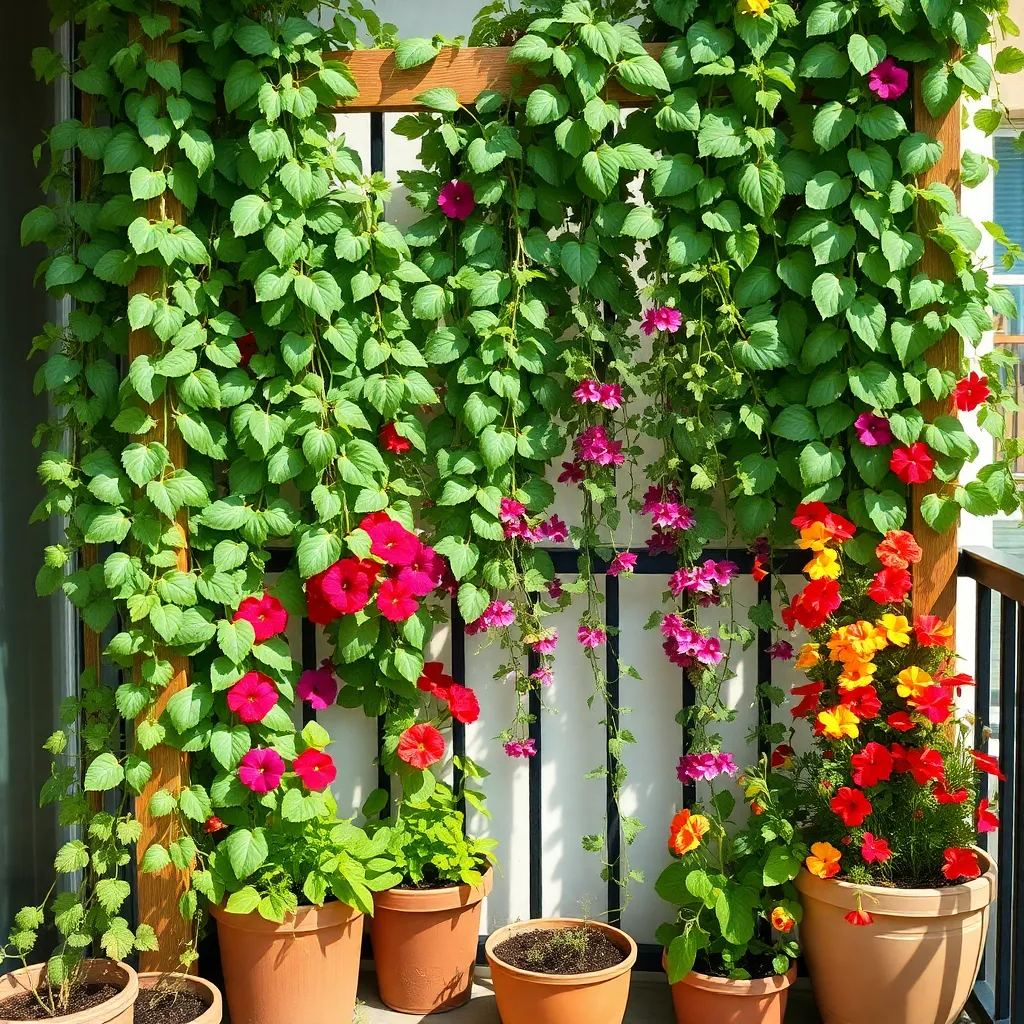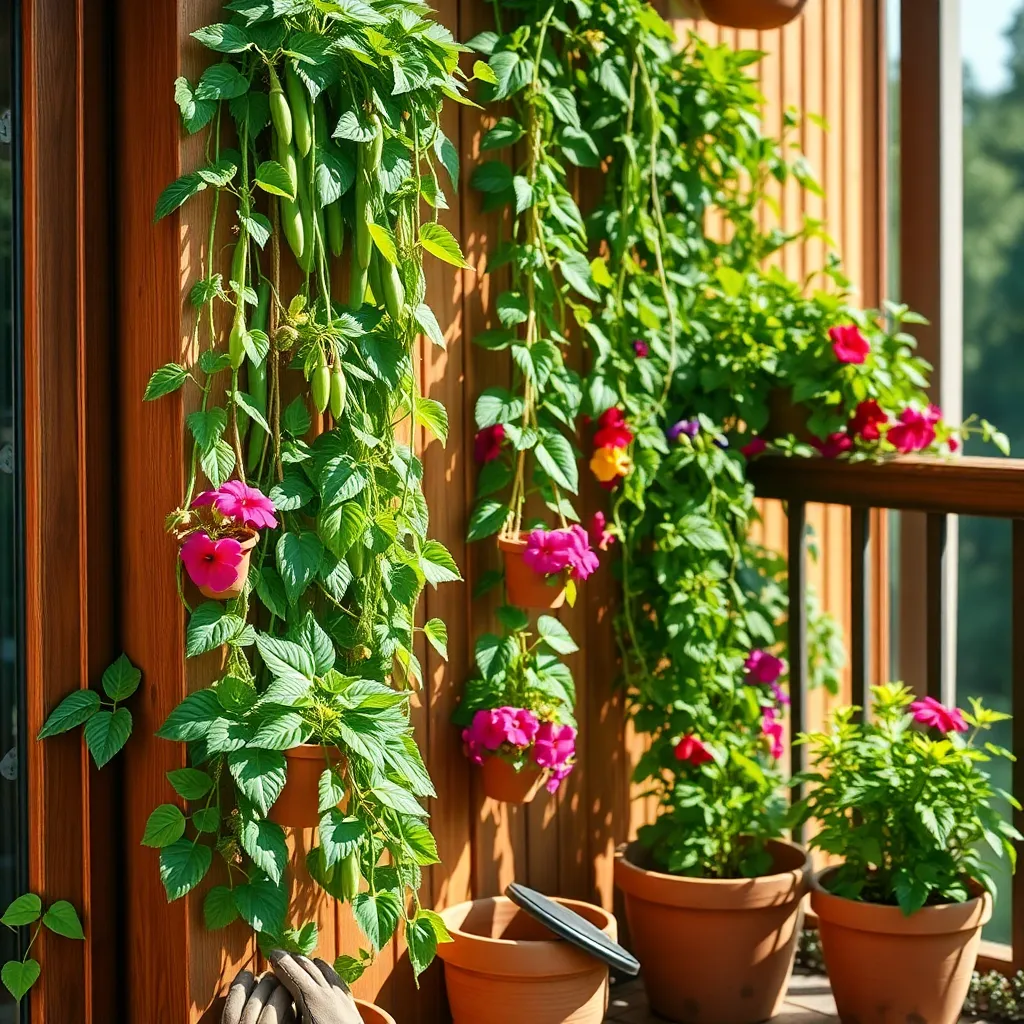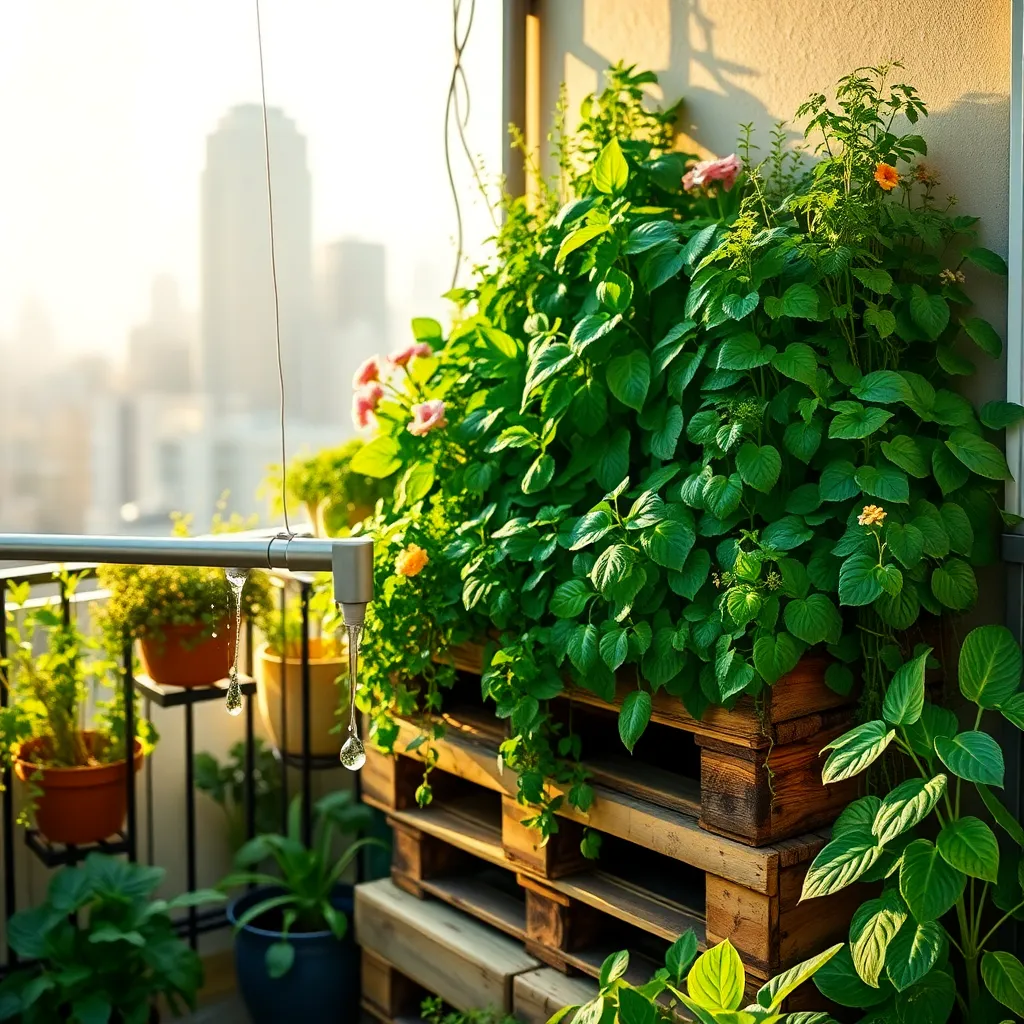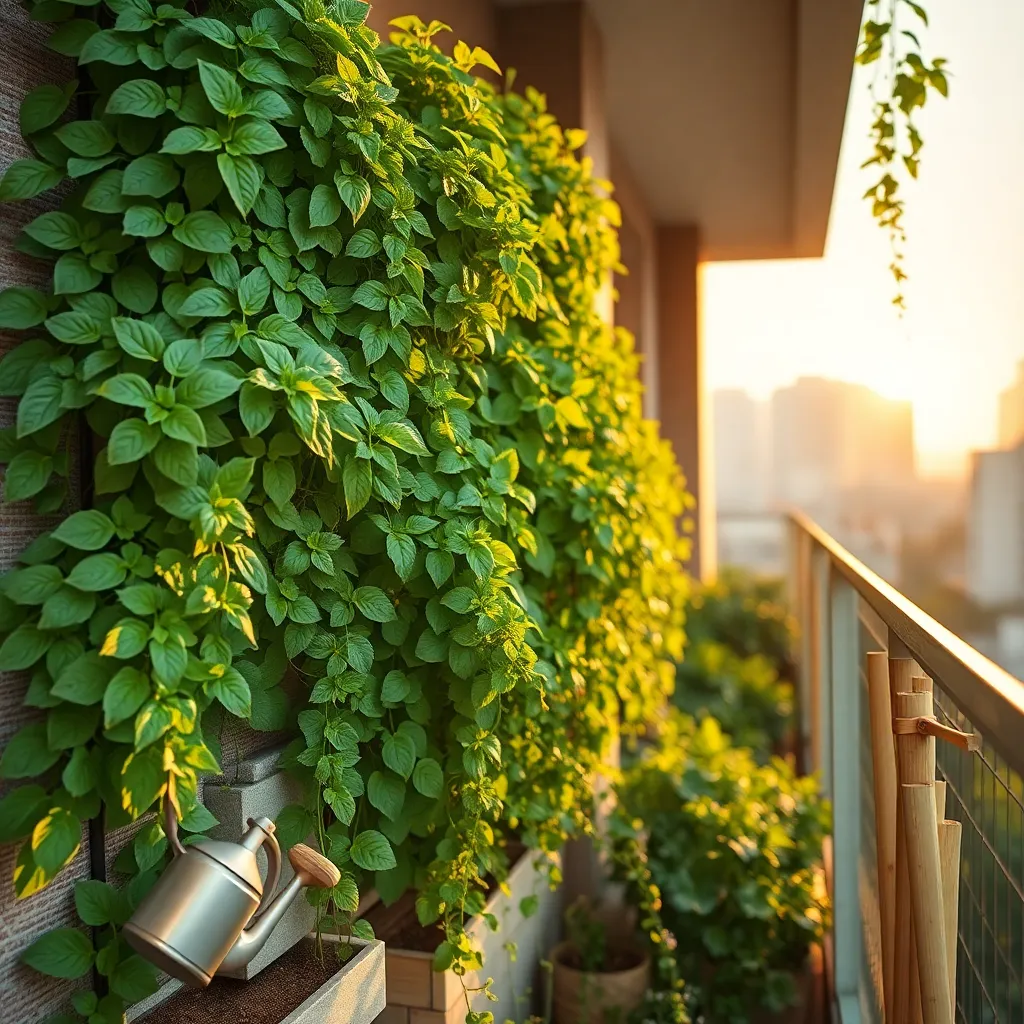Imagine transforming your apartment into a lush, green sanctuary where every inch of vertical space bursts with vibrant life. Whether you’re a seasoned gardener or just starting out, cultivating a vertical garden in your home can be a rewarding venture that brings nature closer, even in the heart of the city.
In this article, we’ll delve into the essentials of vertical gardening, offering techniques and tips to help you optimize your space and bring your gardening dreams to life. You’ll discover how to select the perfect plants for your environment, create innovative structures, and maintain a thriving vertical garden that complements your lifestyle.
For beginners, we’ll guide you through the process with simple, actionable steps that will make your first vertical garden a success. Experienced gardeners can look forward to advanced strategies that enhance productivity and aesthetic appeal, ensuring your garden is as functional as it is beautiful.
By the end of this journey, you’ll be equipped with the knowledge to transform bare walls and empty corners into flourishing green landscapes. Get ready to embrace the beauty and benefits of vertical gardening, as we walk you through every step of the way with enthusiasm and expertise.
Select Space for Vertical Garden

When selecting space for your vertical garden, consider areas that receive ample natural light, as most plants require at least six hours of sunlight daily. If your apartment has limited natural light, you might opt for grow lights to supplement your plants’ needs.
Look at available wall space, balconies, or even kitchen areas where vertical planters can be mounted or hung. Ensure that the space you choose can handle the weight of a vertical garden structure, especially when the plants are fully grown and watered.
Ventilation is another critical factor in selecting your garden space. Good airflow helps to prevent fungal diseases and keeps plants healthy, so try to avoid cramped or enclosed areas.
For those with limited space, consider using hanging pots or tiered shelving to maximize vertical growing potential. Choose plants that are well-suited to vertical growth, such as herbs, leafy greens, or compact flowering plants, which thrive in these conditions.
Choose Suitable Plant Varieties

Choosing the right plant varieties is essential for a thriving vertical garden in your apartment. Begin with plants that are known for their adaptability in compact and vertical spaces. Herbs like basil, mint, and thyme are excellent choices because they grow quickly and can be harvested regularly. These plants also thrive in smaller containers, making them perfect for apartment settings.
For those new to gardening, starting with low-maintenance plants is advisable. Consider succulents and air plants, which require minimal watering and care. These varieties are ideal for vertical gardens since they are lightweight and can be easily attached to vertical structures. Additionally, they add visual interest with their unique shapes and colors.
Advanced gardeners might experiment with vining plants such as peas or beans. These plants naturally climb and can be trained to grow vertically with the help of trellises or netting. Ensure they receive sufficient sunlight, ideally by placing them near a sunny window. Regularly check for pests and support the vines as they grow to prevent damage.
In terms of soil, use a lightweight, well-draining potting mix to prevent root rot. A mix designed for container gardening is often best, as it retains moisture while allowing excess water to drain away. Watering needs will vary, so monitor the soil moisture and water when the top inch feels dry. Adjust your watering schedule based on your apartment’s humidity and temperature conditions.
Install Vertical Support Structures

Once you’ve selected your plants, it’s essential to install the right vertical support structures. A sturdy support system will ensure your plants have the space to grow upwards and thrive in your apartment.
Consider using trellises, which are versatile and can be made from materials like wood, metal, or even recycled items. Attach these structures securely to walls or place them in pots to keep your plants stable as they grow.
For a more minimalist look, you might opt for tension rods or wire grids. These are perfect for lightweight plants like herbs or small flowering vines, providing a chic and practical solution.
Advanced gardeners might explore creating a living wall using modular systems. These systems typically include containers or pockets that can be mounted directly onto a wall, offering excellent drainage and airflow for more demanding plants.
When setting up your vertical garden, ensure you use the right soil mix. A lightweight potting mix with good drainage properties is ideal, as it prevents waterlogging which can harm your plants.
Finally, regularly check the stability of your structures, especially if you have large, mature plants. Tighten any loose connections and adjust supports as needed to keep your vertical garden in top condition.
Ensure Proper Watering System

Setting up an effective watering system is crucial for a thriving vertical garden. Begin by understanding your plants’ specific water needs, as these can vary greatly depending on the species.
Utilize self-watering pots or drip irrigation systems to maintain consistent moisture levels. These systems are particularly useful in vertical gardens where gravity can lead to uneven water distribution.
Pay attention to soil type, as it affects how water is retained. Use a lightweight, well-draining potting mix to prevent waterlogging and ensure proper aeration.
For beginners, a simple manual method like a watering can with a narrow spout can provide control over water application. Advanced gardeners might consider smart irrigation systems that adjust water delivery based on moisture sensors.
Maintain Light and Nutrients Regularly

Providing the right amount of light is crucial for a successful vertical garden in your apartment. Position your garden near a south-facing window if possible, to ensure plants receive adequate sunlight for growth. For those with limited natural light, consider investing in full-spectrum grow lights. These lights mimic natural sunlight and can be adjusted to specific plant requirements, ensuring your garden thrives.
It’s equally important to maintain a regular nutrient schedule to keep your plants healthy. Use a balanced liquid fertilizer every two weeks, applying it directly to the soil to encourage robust growth. For more advanced gardeners, incorporating slow-release fertilizers into the potting mix can provide a steady supply of nutrients, reducing the need for frequent feeding.
Monitoring your plants for signs of nutrient deficiency is essential. Look out for yellowing leaves or stunted growth, which can indicate a lack of nutrients, and adjust your fertilization routine accordingly. For a more tailored approach, conduct a soil test to understand the specific nutrient needs of your plants and adjust your care regimen to address these requirements.
Maintaining an optimal balance of light and nutrients will ensure your vertical garden remains lush and vibrant. Remember to adjust the height of your grow lights as plants grow taller to prevent any burning of foliage. By following these simple yet effective strategies, both beginner and experienced gardeners can enjoy a thriving vertical garden in their apartment.
Conclusion: Growing Success with These Plants
In nurturing your vertical garden, you’ve unlocked powerful relationship insights: the importance of cultivating a strong foundation, the patience required for growth, the nourishment provided by open communication, the adaptability necessary for thriving in limited spaces, and the joy of watching your efforts blossom. These principles not only apply to plants but are vital to nurturing your personal relationships.
Take action today by identifying one area in your relationships where you can plant seeds of growth. Perhaps it’s initiating an open conversation or dedicating time to nurture your connection. As you embark on this journey, remember that relationships, like gardens, require consistent care and attention.
Bookmark this article as your go-to guide for relationship maintenance and inspiration. By saving it, you ensure that these insights remain at your fingertips, ready to support you on your path to a flourishing relationship.
Look forward to a future where your relationship thrives, blooming with understanding and love. With each intentional step you take, you’re sowing the seeds for a lasting, resilient bond. Keep this guide close, and let it remind you that growth is always within reach.
